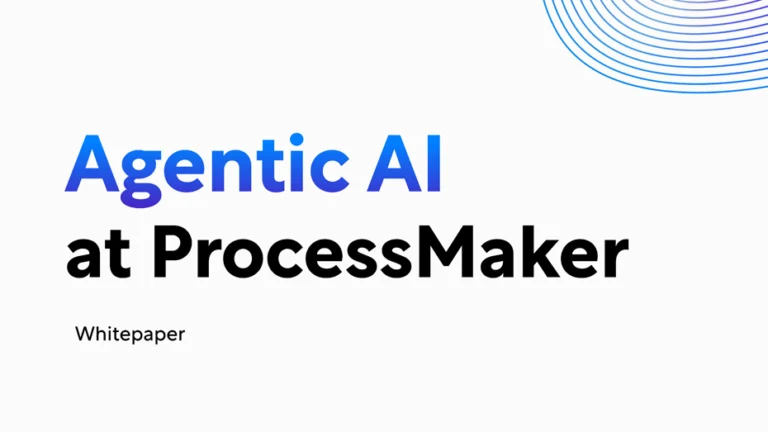Customer onboarding is an essential process for many businesses, and especially banks and financial institutions. Relationships are vital in both retail and commercial banking. Getting off to a good start with an outstanding customer onboarding experience can help you establish a strong relationship both today and in the future. There’s no one size fits all approach, however, and much nuance.
We can define onboarding as to how new clients and banks establish a relationship with each other. Some steps may be well defined, such as filling out an application form. Additional measures may be more fluid, such as a customer sitting down with an account manager to ask questions.
Either way, onboarding offers an excellent chance for both parties to get to know one another. Customers may find solutions to their pain points. Banks can gather data, and when appropriate, cross-sell additional products and services. Let’s dig deeper into why this process is so important.
Optimize your onboarding processes before it’s too late
Each customer will have their own needs and challenges. They may also have different account types, and there are countless compliance issues to consider. These factors necessitate customized approaches for every client and every onboarding experience.
Consider compliance. Bain and Company have found that significant banks racked up roughly $200 billion in fines from 2009 to mid-2016 due to money laundering. With effective “Know-Your-Customer” measures, financial institutions can identify potential liabilities more quickly and potentially mitigate issues (say by turning a would-be client away or reporting him/her to the appropriate authorities).
Outside of legal concerns, a well-developed onboarding process could uncover customers that aren’t a good fit for your firm. Another bank may better serve them, and you could expend your resources on higher-value clients. Likewise, as you get to know a customer, you may realize they require other services you can provide.
Yet for all its potential, many banks (and other companies) fail to offer a good, let alone exceptional, onboarding experience. Instead, they throw together a haphazard process that leaves questions unanswered, both for the customer and the financial institution. Vital information falls to the wayside, opportunities are missed, and preventable problems may later crop up.
Simple steps you can take to improve your onboarding process right now
When you optimize your onboarding processes, not only does it help to reduce time and financial costs, but it also boosts customer satisfaction to help ensure they do not sign up with another bank. Continue reading to learn more:
Put someone in charge of onboarding
Leadership is vital for developing any process. Financial institutions must identify a leader who will set goals, manage progress, and accept responsibility. Remember, however, even the best managers need support, and a practical onboarding experience will require input from multiple parties (such as account managers and customer service reps).
Understand your audience
Next, consider things from your customer’s perspective. When opening an account or signing up for services, what pain is the client trying to address? What resources do they have at their disposal? Banks should collect data at every touchpoint. As you do, your understanding may evolve.
Connect early and often
Your initial communications will set the tone for your relationship with the client. You should send personalized messages, perhaps further addressing a client’s concerns. When possible, handwritten notes are best for the first contact (although personalized emails are crucial). Make sure to include a “thank you” whether the customer opened an account or only paid a visit. As the relationship grows, touch base regularly. You can provide pertinent information when relevant, or say hello.
Get to know your customers better
Before you pitch a stern sales message, earn the client’s trust. Many people react defensively to pushy sales tactics, immediately rejecting the offer. Once a potential customer trusts you, however, they’ll be more willing to listen.
Banks can do this by initially talking with clients about the free services provided, such as a mobile banking app or bill payment. People take their finances seriously and want to work with institutions they can trust. After you establish rapport, you can mention credit cards or investment accounts.
Develop an omni-channel experience
You want to create a presence on every platform your clients and prospects use; it’s critical for your brand’s survival. While it’s best to start with handwritten notes and email, banks can expand communication to other channels as the relationship solidifies. If you’ve been assisting a small business owner with commercial financing, you could add them on LinkedIn, for example. You can also place a link to your firm’s Facebook page in an email, inviting a client to follow for updates.
Come the holiday season; upper management might send out a video with a heartfelt season’s greeting. Also, consider text messaging, mobile app notifications, and other channels. Just make sure you’re not too intrusive.
Collect, measure, and test
Throughout the entire process, banks will gather much data. You may discover that some messages and methods result in more positive feedback (such as downloading your mobile app).
It’s smart to test different strategies to find the most effective ones. Consider follow-ups after the initial meeting or conversation. You could send 500 customers an email, and another 500 customers a handwritten note. Was there any measurable difference in results (i.e., more signups)?
As you study your customer onboarding process, you will better understand your customers’ journeys. Some approaches may lead to more sales or signups for value-added services (i.e., a credit card). When you uncover insights, adjust your strategy to maintain relevancy and alignment with your onboarding objectives. Then collect, measure, and test again.
Establishing strong relationships is essential
Clients use banks to protect and grow their wealth, among other things. Given the industry’s nature, trust is critical for every customer, which means you must build a healthy relationship. Further, this starts with optimizing your onboarding process by using sound strategies, data, and constant testing.
Using Processmaker, you can optimize your onboarding process to identify your target audience while offering your sales and marketing teams automated assistance to strengthen their approach significantly.





